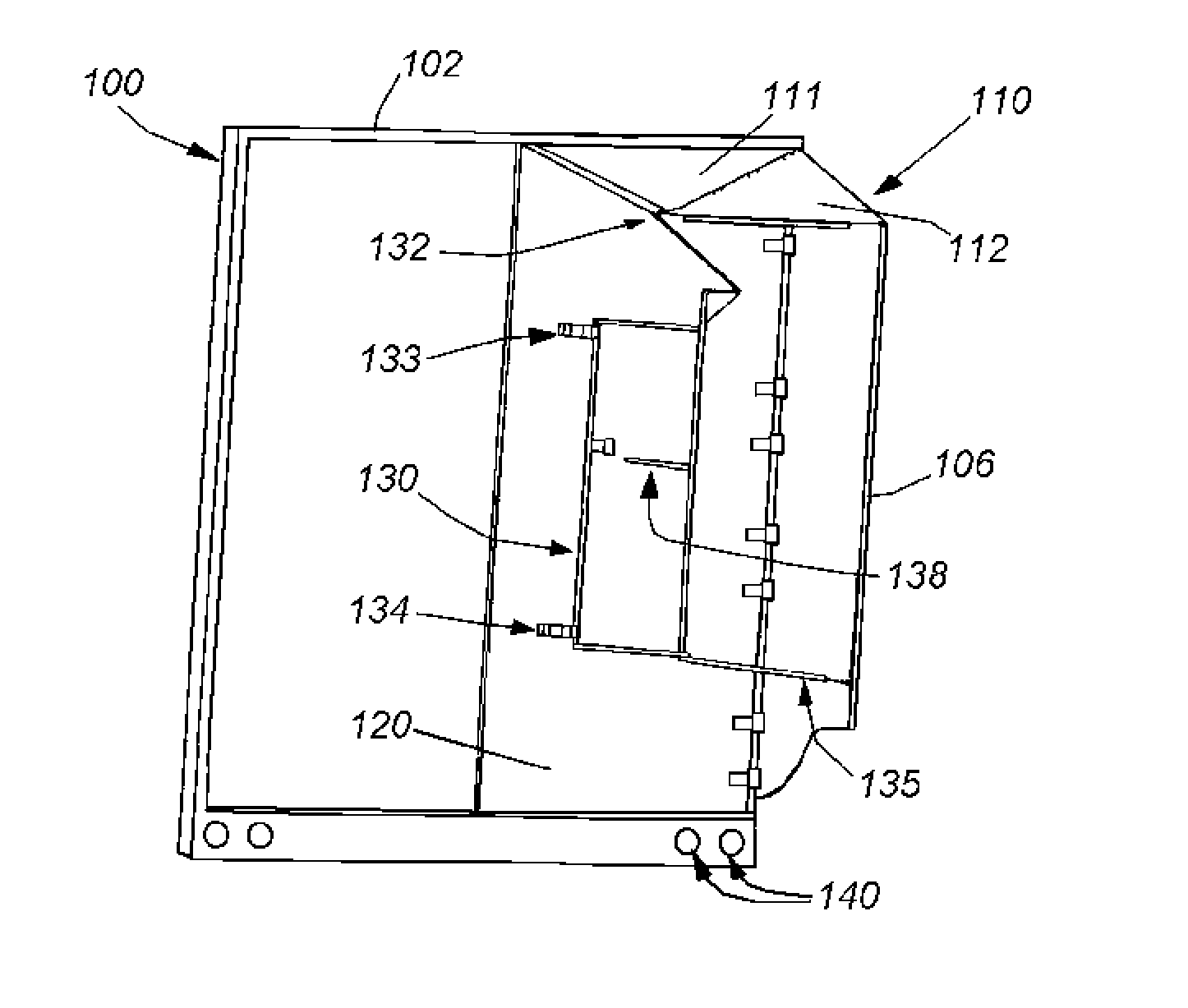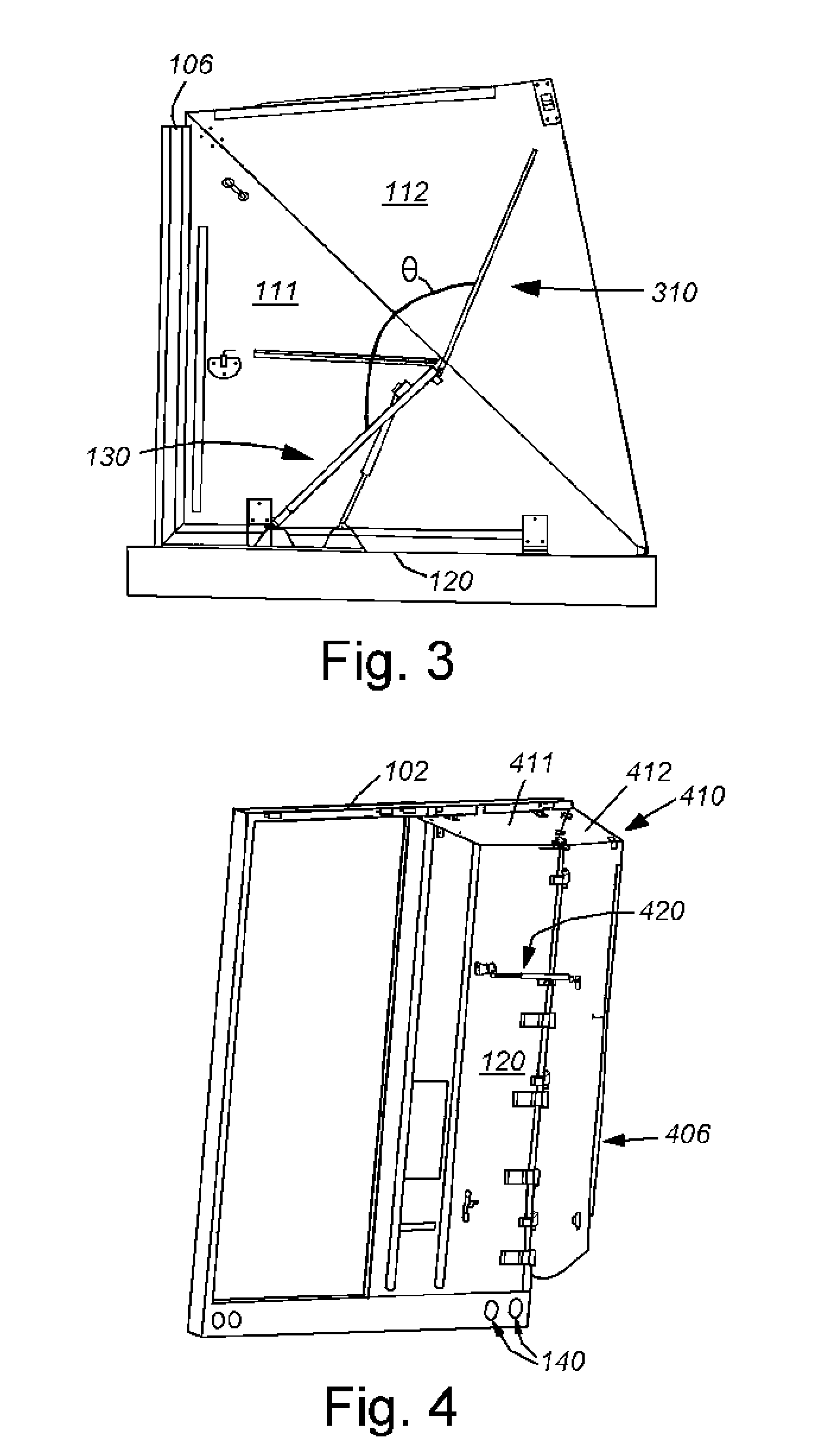Rear-mounted aerodynamic structures for cargo bodies
a cargo body and rear-mounted technology, applied in the field of aerodynamic structures, can solve the problems of large rear aerodynamic structures, inability to provide aerodynamic structures that integrate with the structure and function of the rear cargo doors of the truck, and inability to meet the requirements of cargo body rolling doors, etc., to avoid damage to the upper panel and improve the contact angle in collision
- Summary
- Abstract
- Description
- Claims
- Application Information
AI Technical Summary
Benefits of technology
Problems solved by technology
Method used
Image
Examples
Embodiment Construction
[0082]A rear-mounted aerodynamic structure for securing to a cargo body includes a three- or four-sided structure having a deployed position for assisting in improving aerodynamic efficiency of the cargo body. The cargo body can be the body of a trailer of a tractor-trailer vehicle or trailer towed behind a vehicle such as a truck. It can comprise a trailer body or other cargo body well-known in the art. In an illustrative embodiment, a spoiler “flow keeper” is mounted to a top surface of the rear of the cargo body, as an additional aerodynamic structure or as a standalone spoiler for cargo bodies. The three- or four-sided rear-mounted aerodynamic structure can comprise any of a variety of illustrative embodiments shown and described herein, as well as additional aerodynamic structures as shown and described herein.
I) Rear-Mounted Aerodynamic Structure Including Upper Panel and Side Panel
[0083]Reference is made to FIG. 1 showing a rear perspective view of a single door-mounted rear ...
PUM
 Login to View More
Login to View More Abstract
Description
Claims
Application Information
 Login to View More
Login to View More - R&D
- Intellectual Property
- Life Sciences
- Materials
- Tech Scout
- Unparalleled Data Quality
- Higher Quality Content
- 60% Fewer Hallucinations
Browse by: Latest US Patents, China's latest patents, Technical Efficacy Thesaurus, Application Domain, Technology Topic, Popular Technical Reports.
© 2025 PatSnap. All rights reserved.Legal|Privacy policy|Modern Slavery Act Transparency Statement|Sitemap|About US| Contact US: help@patsnap.com



